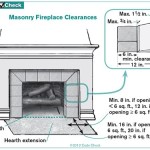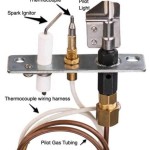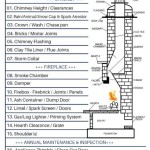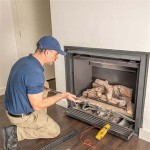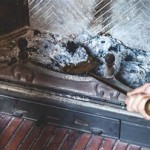Here's an article about fireplace living room ideas, structured according to your specifications:
Fireplace Living Room Ideas: A Comprehensive Guide
A fireplace serves as a natural focal point in a living room, offering both warmth and aesthetic appeal. Integrating a fireplace effectively into the overall design of a living room requires careful consideration of various factors, including the architectural style of the home, the available space, and the desired ambiance. The following information provides a detailed exploration of fireplace living room ideas, encompassing design principles, material choices, and practical considerations for creating a harmonious and inviting living space.
The role of the fireplace has evolved from a purely utilitarian heating source to a prominent design element. Modern fireplaces offer a range of styles, from traditional wood-burning models to contemporary gas and electric options. The selection of a suitable fireplace design is contingent on several elements, including budget, environmental concerns, and personal preferences regarding aesthetics and functionality.
Enhancing Ambiance with Fireplace Design
The fireplace's design significantly impacts the living room's overall ambiance. Several factors contribute to this, most notably the style, size, and surrounding decor of the fireplace.
Traditional Style: Traditional fireplaces often feature ornate detailing, such as carved mantels, decorative tiles, and brick surrounds. These designs tend to evoke a sense of warmth, history, and classic elegance. The use of natural materials, such as wood and stone, further contributes to the traditional aesthetic. These types of fireplaces are generally suited to homes with a rustic or classic architectural style.
Modern Style: Modern fireplaces typically exhibit clean lines, minimalist forms, and a focus on functionality. They often incorporate materials such as concrete, glass, and metal. The emphasis is on creating a sleek and uncluttered appearance that complements contemporary interior design schemes. Modern fireplaces may feature linear designs, floating mantels, or even wall-mounted units that create a dramatic focal point.
Rustic Style: Rustic fireplaces often utilize natural stone, reclaimed wood, and rough-hewn textures to create a warm and inviting atmosphere. These designs evoke a sense of connection to nature and often feature large, imposing structures. Rustic fireplaces can range from classic fieldstone designs to modern interpretations that combine natural materials with contemporary elements.
Size and Proportion: The size of the fireplace should be proportionate to the size of the living room. A fireplace that is too large can overwhelm the space, while one that is too small may appear insignificant. Consideration should be given to the ceiling height and the overall dimensions of the room when determining the appropriate size of the fireplace. Furthermore, the placement of furniture should complement the fireplace, creating a balanced and harmonious arrangement.
Surrounding Decor: The decor surrounding the fireplace plays a crucial role in defining the overall ambiance. The mantel provides an opportunity to display personal items, such as photographs, artwork, and decorative objects. The surrounding wall space can be used to showcase artwork, mirrors, or shelving. The use of appropriate lighting can further enhance the fireplace's visual impact. Consider the color palette and textures of the surrounding decor to ensure a cohesive and aesthetically pleasing design.
Material Selection for Fireplace Surrounds
The materials used for the fireplace surround contribute significantly to its visual appeal and durability. A wide range of materials are available, each with its unique characteristics and aesthetic qualities. The materials chosen should complement the overall design of the living room and reflect the desired style.
Brick: Brick is a classic and versatile material that offers a timeless appeal. It is durable, fire-resistant, and available in a variety of colors and textures. Brick can be used to create a traditional, rustic, or even contemporary look, depending on the style and finish. Painted brick can provide a more modern aesthetic, while exposed brick offers a rustic and industrial feel.
Stone: Stone is a natural and durable material that adds a touch of elegance and sophistication to any fireplace. It is available in a variety of types, including granite, marble, limestone, and slate. Each type of stone has its unique characteristics and aesthetic qualities. Stone can be used to create a formal, rustic, or contemporary look, depending on the type of stone and the design. Natural stone can be used to create a dramatic and imposing fireplace surround, while more refined stones can create a more elegant and sophisticated look.
Wood: Wood is a warm and inviting material that adds a touch of natural beauty to any fireplace. It can be used to create a traditional, rustic, or even contemporary look, depending on the type of wood and the finish. Wood can be used for the mantel, the surround, or both. Reclaimed wood offers a unique and rustic aesthetic that adds character and history to the fireplace. Painted wood can provide a more modern and sophisticated look.
Tile: Tile is a versatile and durable material that offers a wide range of design possibilities. It is available in a variety of colors, patterns, and textures, making it suitable for various design styles. Tile can be used to create a traditional, modern, or eclectic look. Mosaic tiles can add a touch of artistry and visual interest to the fireplace surround. Large-format tiles can create a sleek and modern look.
Concrete: Concrete is a modern and industrial material that offers a sleek and contemporary aesthetic. It can be used to create a minimalist and functional fireplace surround. Concrete can be cast in various shapes and sizes, allowing for creative and unique designs. Polished concrete offers a smooth and refined finish, while textured concrete provides a more rustic and industrial look.
Practical Considerations for Fireplace Integration
Beyond aesthetics, practical considerations are crucial for successful fireplace integration into a living room. These considerations include ventilation, safety, and energy efficiency.
Ventilation: Proper ventilation is essential for wood-burning fireplaces to ensure safe and efficient operation. The chimney must be properly sized and maintained to provide adequate draft and prevent the buildup of harmful gases. Regular cleaning and inspection of the chimney are necessary to prevent hazards such as chimney fires. Gas fireplaces also require proper ventilation to ensure safe operation. Consult with a qualified professional to ensure that the fireplace is properly installed and ventilated.
Safety: Safety is paramount when installing and operating a fireplace. A fire screen or glass enclosure should be used to prevent sparks and embers from escaping the fireplace. Combustible materials should be kept a safe distance from the fireplace to prevent fire hazards. Smoke detectors and carbon monoxide detectors should be installed in the living room to provide early warning of potential hazards. Regular maintenance and inspection of the fireplace are essential to ensure safe operation.
Energy Efficiency: Fireplaces can be a source of heat loss if not properly insulated and maintained. Proper insulation around the fireplace surround can help to prevent heat loss and improve energy efficiency. A fireplace insert can be installed to improve the heating efficiency of a wood-burning fireplace. Gas fireplaces are generally more energy-efficient than wood-burning fireplaces. Consider the energy efficiency of the fireplace when making a selection.
Furniture Arrangement: The arrangement of furniture should complement the fireplace, creating a balanced and inviting living space. The fireplace should be positioned as the focal point of the room, with furniture arranged to facilitate conversation and interaction. A seating area can be created around the fireplace, with chairs and sofas facing the fireplace. The use of area rugs can help to define the seating area and add warmth to the space. Consider the flow of traffic when arranging furniture to ensure that the living room is functional and comfortable.
Lighting: Lighting plays a crucial role in enhancing the ambiance of the fireplace and the living room as a whole. The use of appropriate lighting can highlight the fireplace's architectural features and create a warm and inviting atmosphere. Accent lighting can be used to showcase artwork or decorative objects on the mantel. Task lighting can be used to provide illumination for reading or other activities. Consider the color temperature of the lighting to create the desired mood. Warm lighting can create a cozy and inviting atmosphere, while cool lighting can create a more modern and sophisticated look.
By carefully considering these design principles, material choices, and practical considerations, it is possible to create a fireplace living room that is both aesthetically pleasing and functionally sound. The fireplace will then serve as a focal point for the living room, creating a warm and inviting space for relaxation and socializing.

40 Best Fireplace Décor Ideas Mantel

36 Fireplace Decor Ideas Modern Mantel

Sprucing Up Your Home S Living Room With Fireplace By Expert

The Most Beautiful Living Rooms With A Fireplace

11 Appealing Living Room Designs With A Fireplace

36 Fireplace Decor Ideas Modern Mantel

Fireplace Design Ideas For Your Home Designcafe

Unveiling The 63 Best Modern Fireplace Design Ideas In 2024 Living Room With

House Home 10 Living Room Design Ideas You Ll Love

7 Inspirational Living Room Layout Ideas


